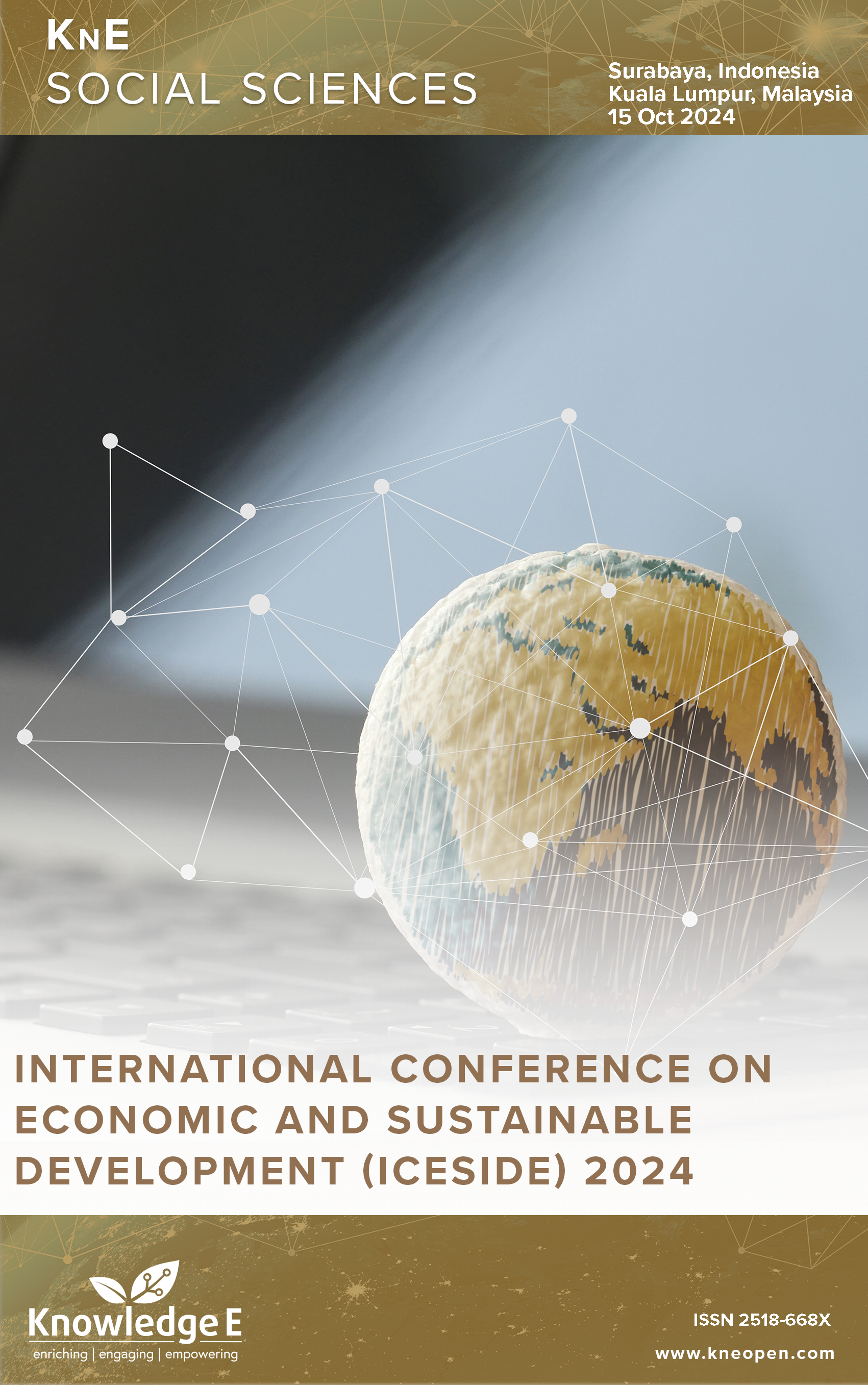Sustainable Development Goals (SDGs) and the Multistakeholder Role of Creative Economy Actors in Sampang Regency
DOI:
https://doi.org/10.18502/kss.v10i5.18105Keywords:
SDGs, multistakeholders, role, creative-economyAbstract
Sustainable development goals (SDGs) are a global agenda for sustainable development. The creative economy is an important part of sustainable development. The objectives of this study are to: (1) analyze the contribution of the creative economy in realizing the SDGs in Sampang district, and (2) analyze the role of multi-stakeholders in developing the creative economy sustainably. The type of research used in this study is qualitative descriptive research, with a case study approach. The results of this study are: (1) The creative economy contributes to the SDGs, including: no poverty (Goal 1), gender equality (Goal 5), decent work and economic growth (Goal 8), industry, innovation and infrastructure (Goal 9), reducing inequality (Goal 10), sustainable cities (Goal 11), sustainable consumption and production patterns (Goal 12), peaceful and inclusive societies (Goal 16) and means of implementation and global partnerships (Goal 17). (2). The role of multi-stakeholders in developing sustainable tourism is not yet fully apparent. Collaboration can connect elements of business, government, community, academics, and media in order to realize the creative economy sector sustainably. Attention and commitment from multistakeholders are needed, especially the Sampang district government. Collaboration between actors, between sectors, and between lines in the development of the creative economy must be maintained sustainably and integrated.
References
Prajanti, et al. 2021. Strategic study of inclusive and sustainable creative economic development in the city of Semarang. Jurnal of Riptek.Volume 15 No. 2 (86–101). http://riptek.semarangkota.go.id.10.35475/riptek.v15i2.124 DOI: https://doi.org/10.35475/riptek.v15i2.124
Alfariza L, Putra RE, Rosmiati M. Analysis of urban farming contribution in supporting the achiement of sustainable development goals (SDGs) on economic and social pilars. Mimbar Agribusiness. Journal of Agribusiness-Informed Scientific Society Thought. 2023;9(1):14–23. DOI: https://doi.org/10.25157/ma.v9i1.8134
UNCTAD. Creative Economy for Sustainable Development: Let’s Connect! 2018. https://unctad.org/meeting/creative-economy-sustainable-development-lets-connect. (accessed on 06 October 2024).
UNCTAD. Creative Economy Outlook. 2022. https://unctad.org/system/files/official-document/ditctsce2022d1_en.pdf (accessed on 06 October 2024).
Ministry of Tourism and Creative Economy. 2023. https://kemhttps://kemenparekraf.go.id/ekonomikreatif. (accessed on 06 October 2024)
Sugiyono. Metodologi Penelitian Kuantitatif dan Kualitatif. Bandung: ALFABETA; 2019.
Creswell JW. Research design: qualitative, quantitative and mixed methods approaches. 4th ed. Thousand Oaks (CA): Sage; 2014.
Manioudis M, Angelakis A. Creative Economy and Sustainable Regional Growth: Lessons from the Implementation of Entrepreneurial Discovery Process at the Regional Level. Sustainability (Basel). 2023;15(9):7681. DOI: https://doi.org/10.3390/su15097681
Dairoby A. Efforts to improve Indonesia’s creative economy: Analysis of sustainable development goals number 8 decent work and economic growth. 2023. Proceeding of IROFONIC.
Boggs J. Cultural industries and the creative economy–Vague but useful concepts. Geogr Compass. 2009;3(4):1483–98. DOI: https://doi.org/10.1111/j.1749-8198.2009.00247.x
Dronyuk I, Moiseienko I, Gregus J. Analysis of Creative Industries Activities in European Union Countries. Procedia Comput Sci. 2019;160:479–4. DOI: https://doi.org/10.1016/j.procs.2019.11.061
Presidential Regulation No. 142 of. National Creative Economy Development Master Plan; 2018. pp. 2018–25.
Mah DN, Hills P. Collaborative governance for sustainable development: wind resource assessment in Xinjiang and Guangdong Provinces, China. 2012. March 2012. Sustain Dev (Bradford). 2012;20(2):85–97. DOI: https://doi.org/10.1002/sd.466
Purwanto H, Prasetyo AS, Firmansyah YJ, Anisah S, Aini QA. Implementasi of sustainable development goals (SDGs) related to suistanble tourism development in Bangkalan regency. In: ICONIES Conference Proceedings. Aculty of Economics. UIN Maulana Malik Ibrahim Malang. 2024. P-ISSN: 2476-9851 / E-ISSN: 2541-3333
Fauzi A. Teknik analisis keberlanjutan. Jakarta: Gramedia Pustaka Utama; 2019.
Farsari I, Butler RW, Szivas E. Complexity in tourism policies. Ann Tour Res. 2011;38(3):1110–34. DOI: https://doi.org/10.1016/j.annals.2011.03.007
Erdogan, I., and Erdogan, N. A Critical Evaluation of Ecotourism. Ecotourism in Forest Ecosystem Workshop & TODEG in Its Tenth Year, January. Hal 66–81. 2010
Avelino F, Wittmayer JM. Shifting power relations in sustainability transitions: A multi- actor perspective. J Environ Policy Plann. 2016;18(5):628–49. DOI: https://doi.org/10.1080/1523908X.2015.1112259
Rees, G. H., and MacDonell, S. 2017. Data gathering for actor analyses: A research note on the collection and aggregation of individual respondent data for MACTOR.2017. Future Studies Research Journal: Trends and Strategies,Vol 9(1), Hal 115–137. https://doi.org/10.24023/FutureJournal/2175-5825/2017.v9i1.256. DOI: https://doi.org/10.24023/FutureJournal/2175-5825/2017.v9i1.256

